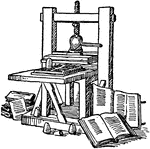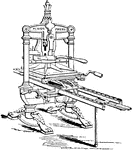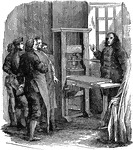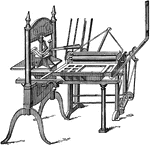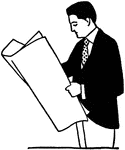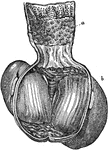
Stomach of a Bird
The stomach of a grain-eating bird, which has a gizzard that functions to crush the seeds to pieces…
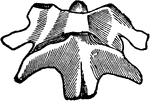
Upper Two Vertebrae
The upper two vertebrae of the spinal column, involved in head movement. In performing the rotary motion…

Exercise
"Place the palms of the hands together in front of the breast and press hard." -Foster, 1921
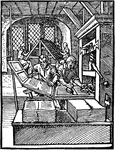
Printing Office
An old-fashioned printing office. The press shown worked by laying paper under a wooden press.

Stereotyping
"Stereotyping is the art of fabricating metal plates resembling pages of type, which impressions may…

Calico Printing
Calico printing was the first "operation connected with the printing of cloth."- Lupton

Modern Printing Press
"The printing press- originating at the middle of the fifteenth, the art of printing continued to be…

Hunter's Screw-press
The Hunter's screw is formed of two screws, a larger and a smaller. The former being screwed internally…
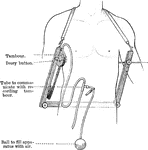
Stethometer
The stethometer consists of a frame formed of two parallel steel bars joined by a third at one end.…
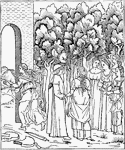
Poliphilo in the Garden
The engraved illustration of Poliphilo in the garden from Hypnerotomachia Poliphili, one of the first…

Aldus Manutius
(1449-1515) An engraving print of Aldus Manutius, one of the first printers and founder of the Aldine…
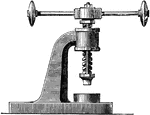
Screw Press
In the screw press, the screw is turned by means of a lever, which gives a great increase of mechanical…
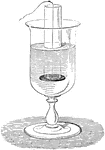
Upward Pressure
A tube open at both ends with the lower end covered with a piece of card, plunged into the water. The…
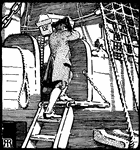
Benjamin Franklin
Benjamin Franklin running away from his home in Boston. He is heading to New York to find work at a…
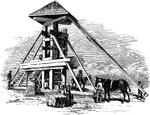
Cotton Press
An illustration of a cotton press which presses the cotton into compressed bundles which is helpful…
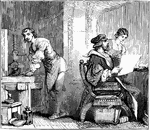
Caxton in the Almonry, Westminster
William Caxton (c. 1415~1422 – c. March 1492) was an English merchant, diplomat, writer and printer.…
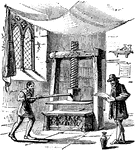
Printing Press
A printing press is a mechanical device for applying pressure to an inked surface resting upon a medium…

Cotton Centennial
A cotton press yard of the Cotton Centennial in the 1884 World's Fair in New Orleans, Louisiana.
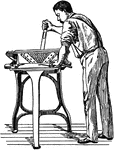
Wood Cutting Tool
In wood working there are a number of fine tools used in cutting wood, in which a single or double shearing…
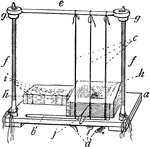
Sewing Press
Used in bookbinding. "Sewing-press. a, table with slot b, through which the cords c pass; d, staples…

Shoe Hammer
"A hammer with a broad and slightly convex face for pounding leather on the lapstone to condense the…
Shooting Stick
"In printing, a piece of hard wood or metal, about ten inches long, which is struck by a mallet to tighten…
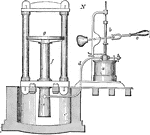
Hydraulic Press
A hydraulic press is a hydraulic mechanism for applying a large lifting or compressive force. It is…

Hydraulic Press
A hydraulic press is a hydraulic mechanism for applying a large lifting or compressive force. It is…
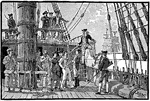
Impressment of American Sailors
The English Royal Navy would impress American sailors, kidnapping them to force them to serve in the…
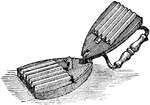
Fluting Iron
"A device for making flutes in a fabric or article of dress, as a ruffle." -Whitney, 1911
Fluting Scissors
"A scissors-shaped implement for fluting or crimping linen, etc. It has small cylindrical fingers, one…
Printers' Galley
"In printing, an oblong shallow tray of brass or wood, rarely of zinc, on which the compositor deposits…
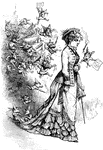
Claxton and Press After Fires
Actress Miss Kate Claxton and the chivalrous press after repeated fires.
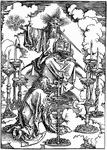
Almighty
The Almighty drawing is a woodcut that was part of the "Apocalypse," a series of fifteen woodcuts created…
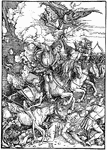
The Four Horsemen
The Almighty drawing is a woodcut that was part of the "Apocalypse," a series of fifteen woodcuts created…

The Blowing of the Sixth Trumpet
The Almighty drawing is a woodcut that was part of the "Apocalypse," a series of fifteen woodcuts created…
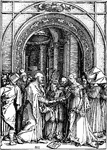
The Marriage of Joseph and Mary
The Marriage of Joseph and Mary is a woodcut that is part of a series "Life of the Virgin" by Albrecht…
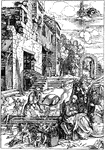
Repose of the Holy Family in Egypt
The Repose of the Holy Family in Egypt is a woodcut that is part of a series "Life of the Virgin" by…
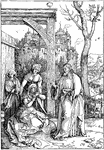
Christ Taking Leave of His Mother
Christ Taking Leave of his Mother is a woodcut that is part of a series "Life of the Virgin" by Albrecht…
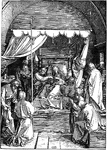
The Death of the Virgin
The Death of the Virgin is a woodcut created by Albrecht Dürer in 1510. It is part of a series…
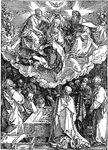
The Assumption and the Coronation of the Virgin
The Assumption and the Coronation of the Virgin is a woodcut created by Albrecht Dürer in 1510.…

Christ Appearing to St. Magdalene
Christ Appearing to St. Magdalene is a woodcut that is part of a series called "Little Passion" by German…
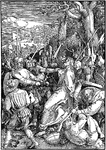
Christ Taken Prisoner
Christ Taken Prisoner is a woodcut by German artist Albrecht Dürer in 1510. It is part of a series…
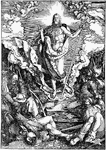
The Resurrection
The Resurrection is a woodcut by German artist Albrecht Dürer in 1510. It is part of a series called…
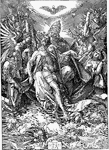
The Holy Trinity
The Holy Trinity is a woodcut that was created by German artist Albrecht Dürer in 1511. This woodcut…
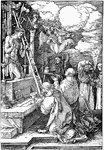
The Mass of St. Gregory
The Mass of St. Gregory is a woodcut that was created by German artist Albrecht Dürer in 1511.…

The Holy Family
The Holy Family is a woodcut that was creates by Albrecht Dürer in 1511. It depicts Mary and Jesus…
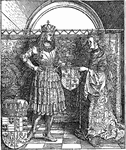
The Emperor Maximilian and his Bride, Mary of Burgundy
The Emperor Maximilian and his Bride, Mary of Burgundy is a woodcut that was created by German artist…
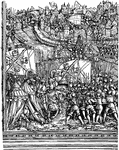
Troops Entering a Town After a Siege
Troops Entering a Town After a Siege is a woodcut that was created by German artist Albrecht Dürer.…

The Emperor Maximilian Receiving the Submission of a Besieged City
The Emperor Maximilian Receiving the Submission of a Besieged City is a woodcut that was created by…

The Investiture of the Duke of Milan
The Investiture of the Duke of Milan is a woodcut that was created by German artist Albrecht Dürer.…
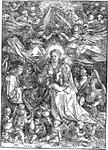
The Virgin and Child Surrounded by Angels
The Virgin and Child Surrounded by Angels is a woodcut that was created by German artist Albrecht Dürer…
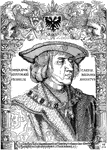
Emperor Maximilian
This a woodcut portrait of the Emperor Maximilian. It was created by Albrecht Dürer in 1519. A woodcut…

